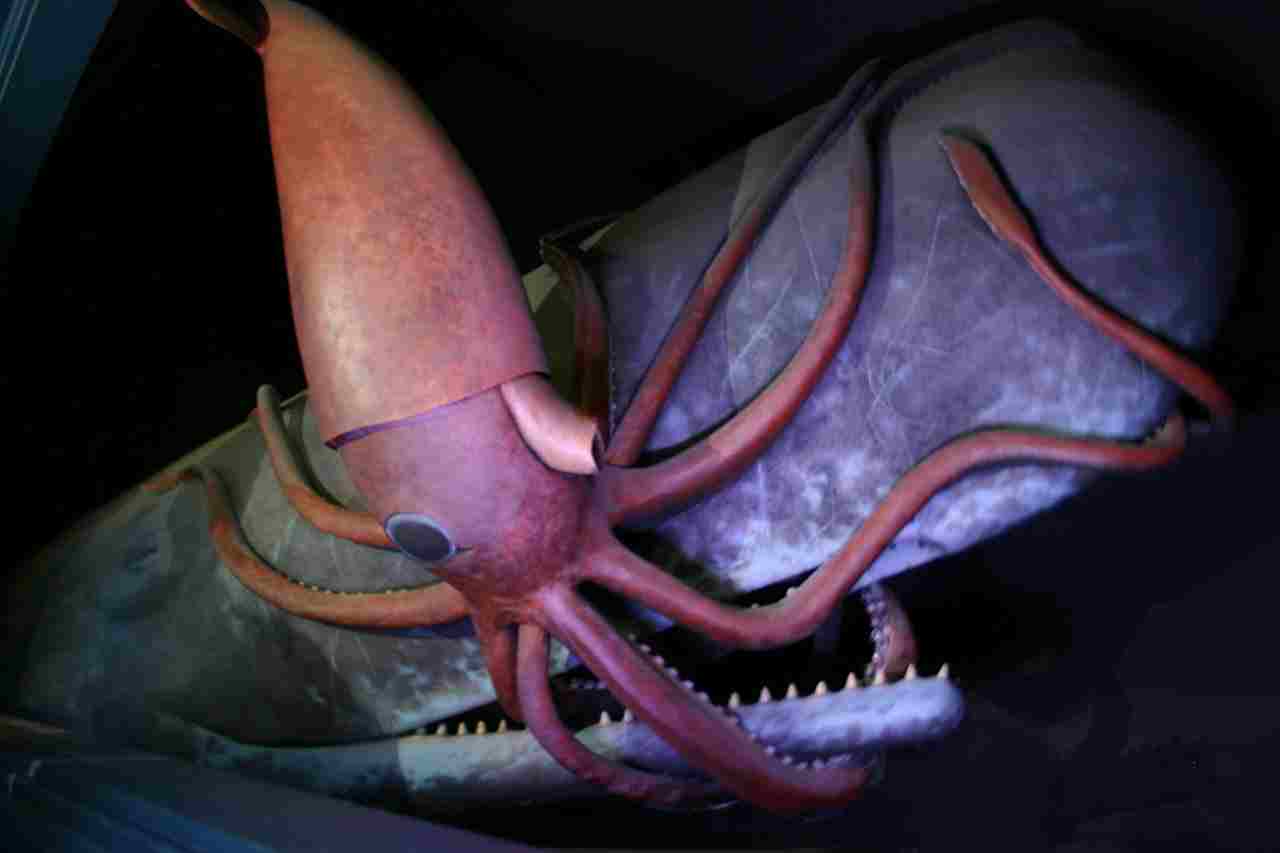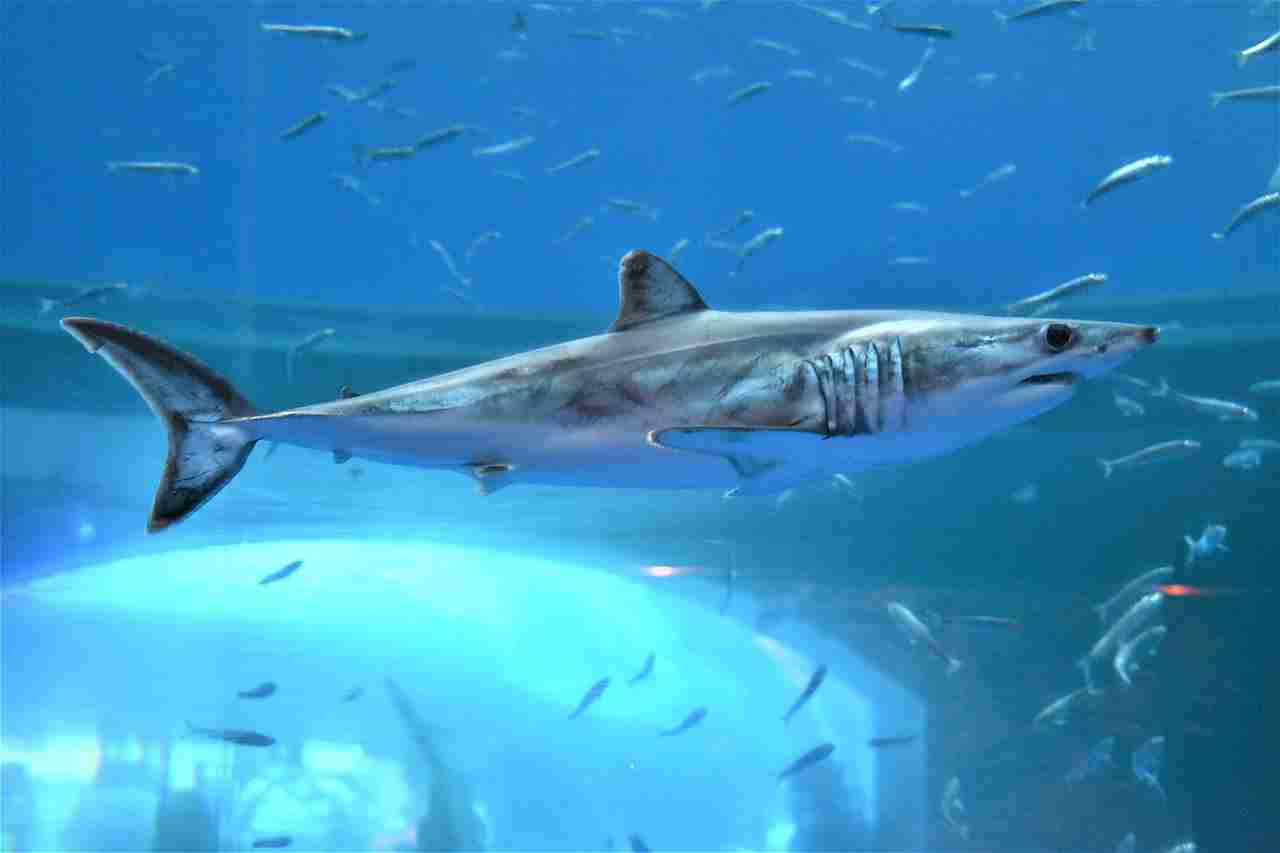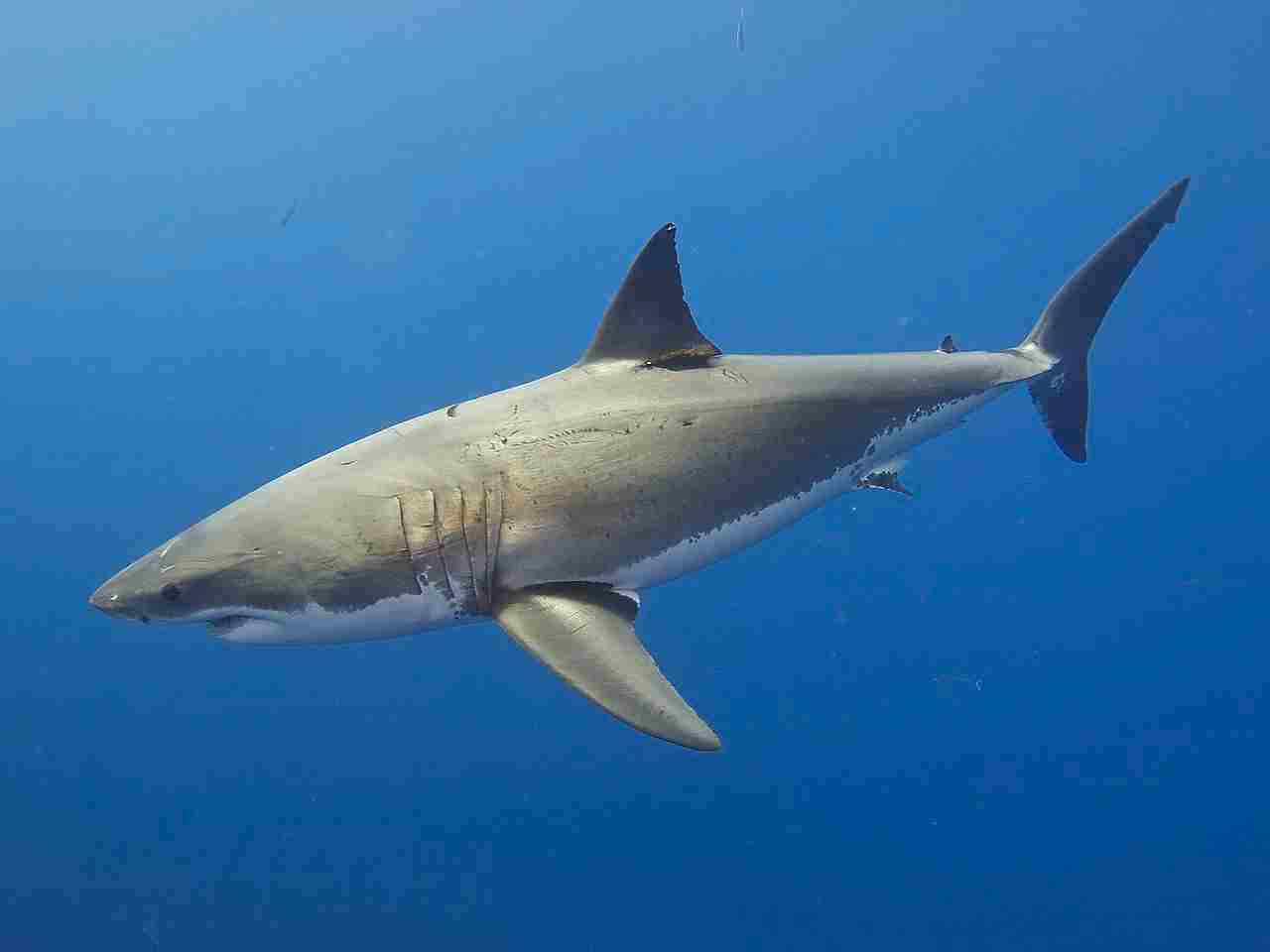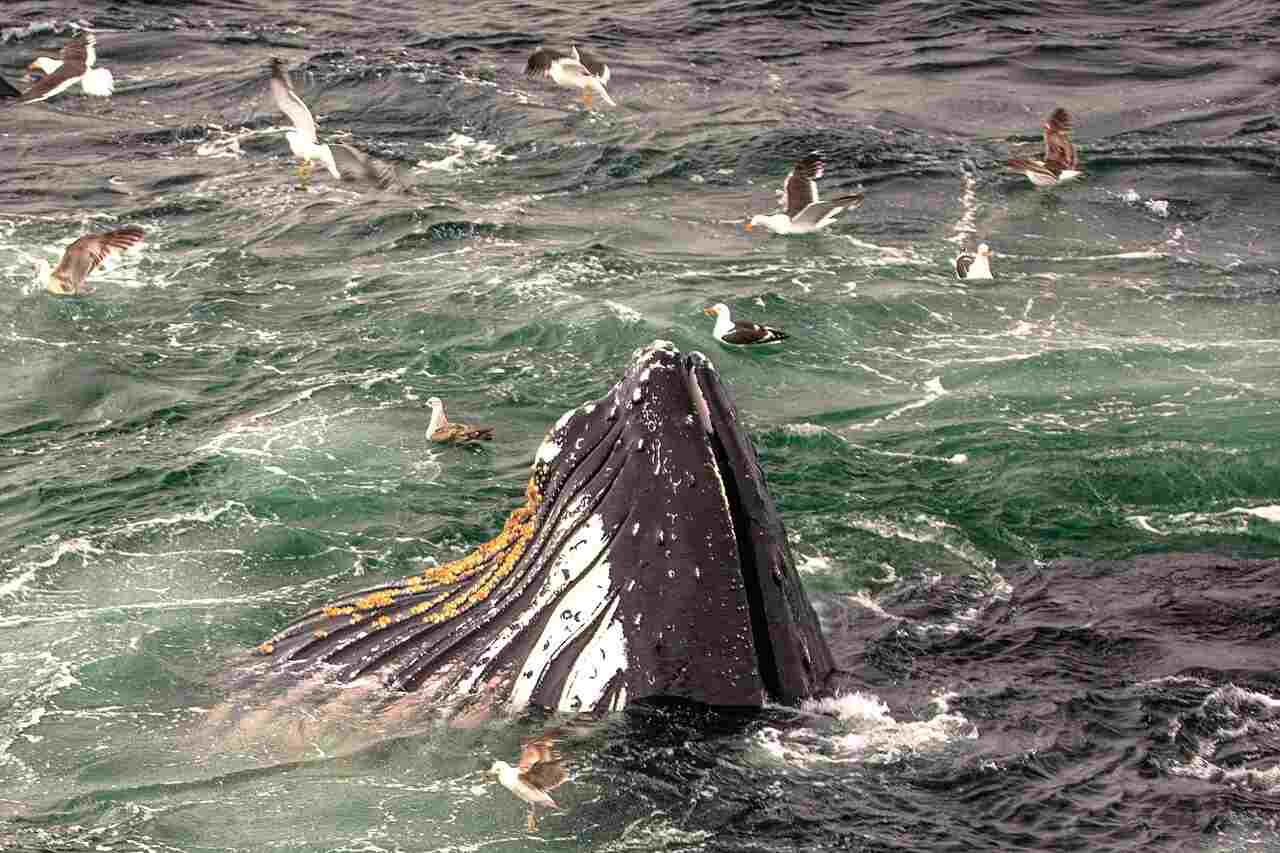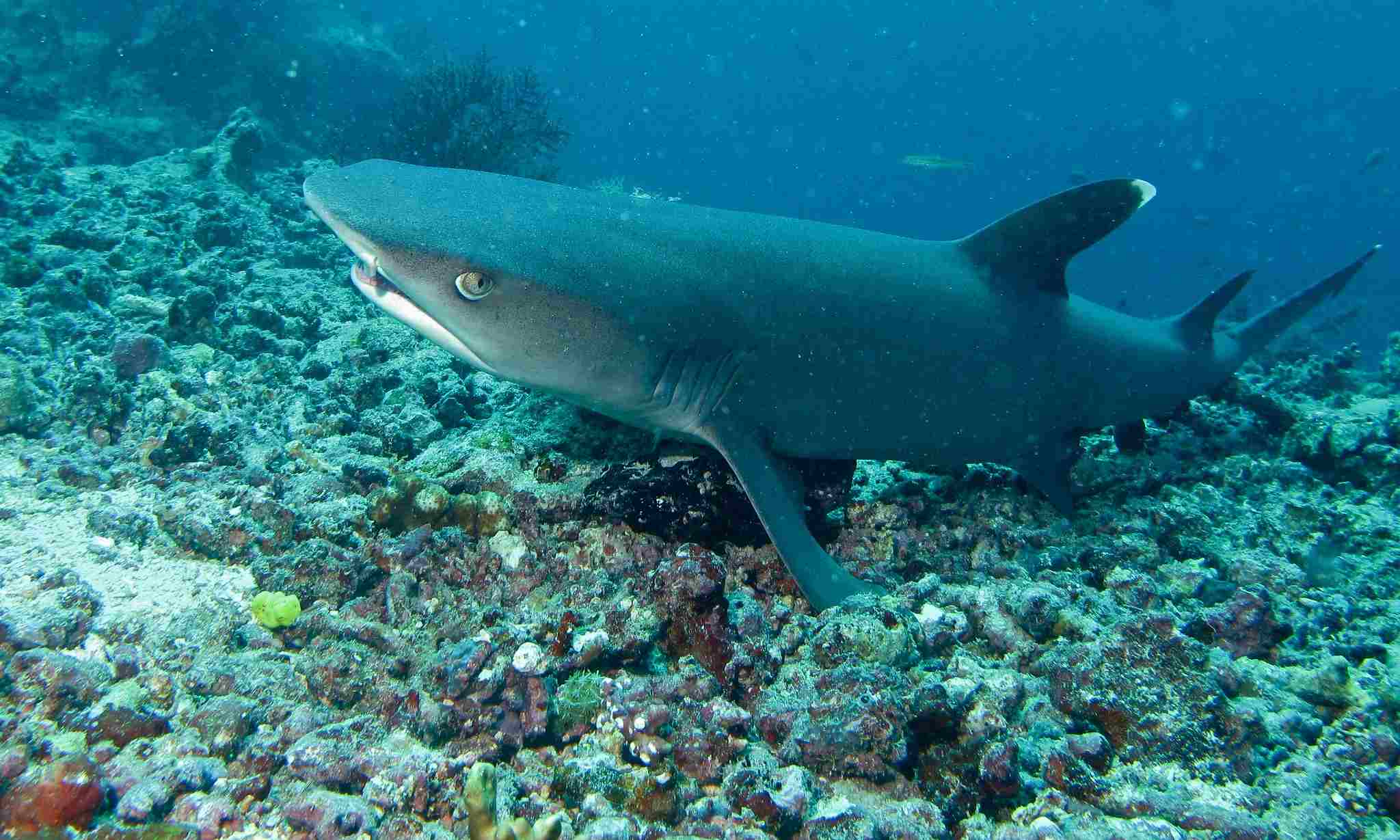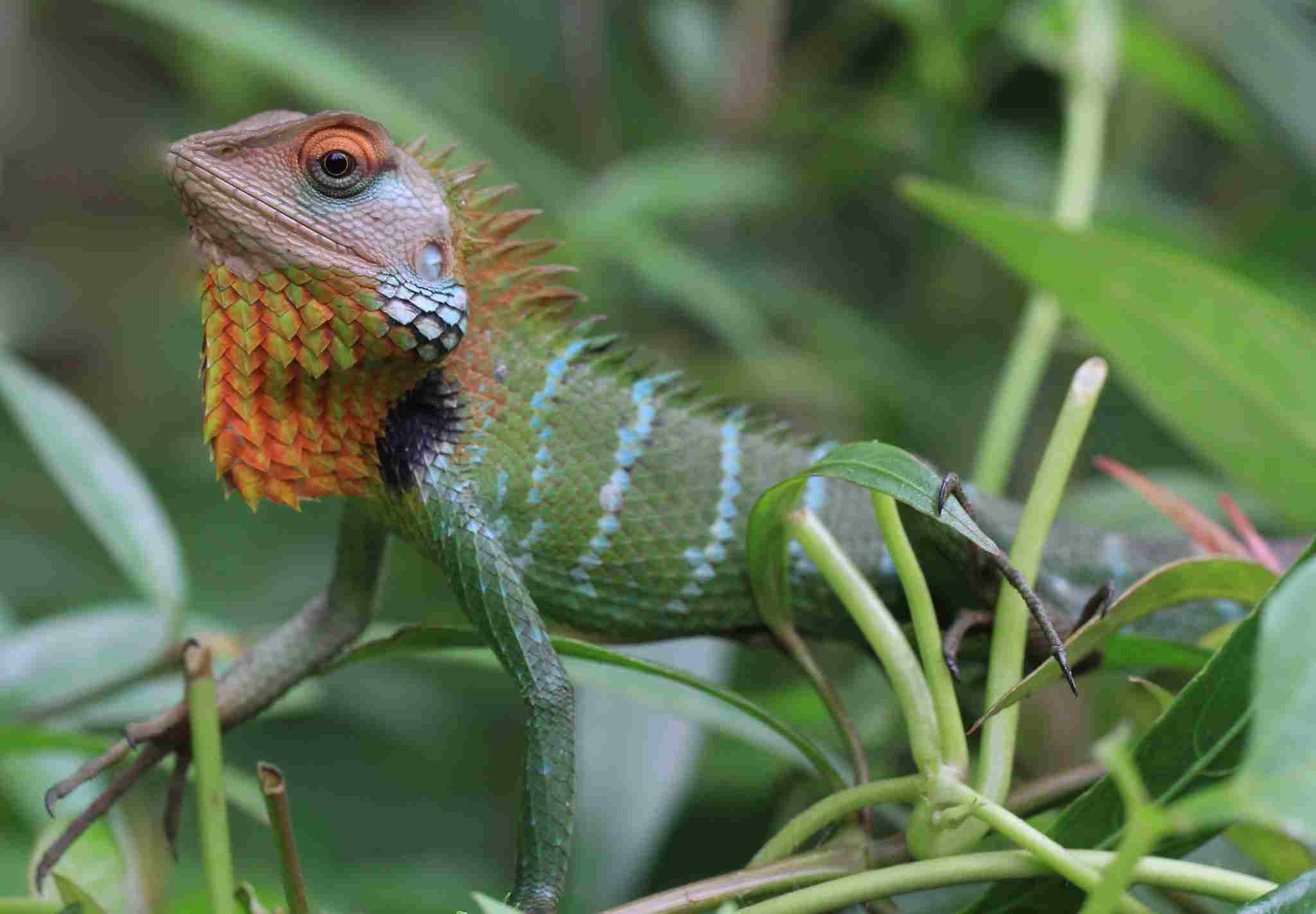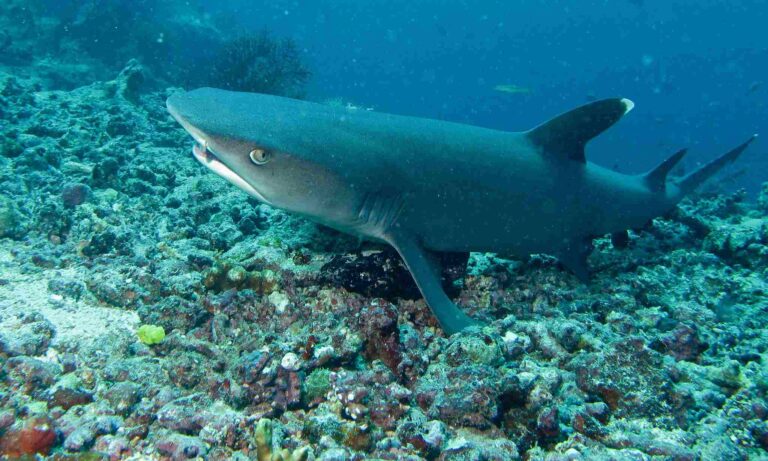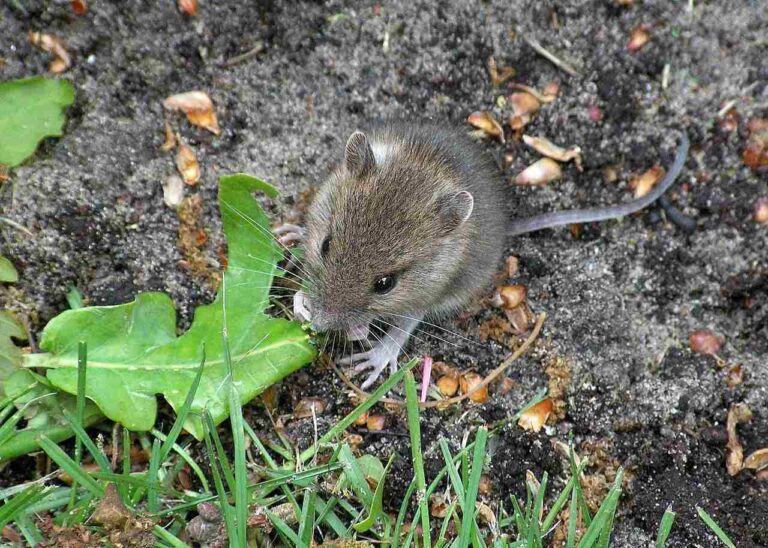Are Fish Carnivores? Unravelling the Feeding Habits of Fish
Fish are not generally carnivores but there are some which stand out as carnivorous predators, including barracuda, northern pike, piranha, bluefin tuna, and bass.
Fish That are Carnivores
Some fish that are carnivorous include; barracuda, bass, northern pike, piranha, bluefin tuna, and great white shark.
1. Barracuda
Barracuda is a fascinating fish that falls into the category of carnivores. With its sleek body and sharp teeth, it is well-equipped for hunting and capturing prey. This predatory fish primarily feeds on smaller fish, such as anchovies and sardines, but it is also known to consume crustaceans and squid.
The barracuda’s hunting strategy is quite impressive. It relies on its exceptional speed and agility to chase down its prey. With a burst of energy, it can reach speeds of up to 27 miles per hour, making it a formidable predator in the ocean. Once it spots its target, the barracuda swiftly closes in, using its sharp teeth to snatch its prey in a matter of seconds.
One of the key characteristics of the barracuda’s feeding habits is its ability to detect vibrations in the water. This sensory adaptation allows it to locate potential prey even in murky or dark conditions. It can sense the movements of its prey from a considerable distance, giving it a significant advantage when it comes to hunting.
Another interesting aspect of the barracuda’s feeding behavior is its tendency to hunt in schools. By hunting in groups, barracudas can effectively corral their prey, making it easier to catch and consume. This cooperative hunting behavior increases their chances of success and ensures a steady supply of food for the entire group.
2. Bass
Bass is a fascinating fish that falls into the category of carnivores. With its predatory nature and sharp teeth, it is well-equipped for hunting and capturing prey. Bass primarily feeds on smaller fish, such as minnows and shad, but it is also known to consume insects, crustaceans, and even small mammals.
One of the key characteristics of bass’s feeding habits is its ability to ambush its prey. Bass are skilled at hiding in vegetation or near structures, patiently waiting for an unsuspecting meal to swim by. When the time is right, they strike with lightning speed, using their sharp teeth to secure their prey.
Bass have a keen sense of sight, which helps them locate their prey in various water conditions. They can detect movement and changes in light, allowing them to spot potential meals from a distance. This visual acuity, combined with their ability to blend into their surroundings, makes bass highly effective hunters.
Another interesting aspect of bass’s feeding behavior is their preference for live prey. They are opportunistic feeders and will actively pursue their prey, rather than relying on scavenging. This active hunting strategy ensures that bass can secure a fresh and nutritious meal.
Bass are also known for their territorial behavior when it comes to feeding. They establish and defend their feeding territories, ensuring a steady supply of food. This territoriality helps to prevent competition and allows bass to focus on hunting within their designated area.
3. Northern Pike
Northern Pike is a fascinating fish that falls into the category of carnivores. With its sharp teeth and streamlined body, it is well-adapted for hunting and capturing prey. Northern Pike primarily feeds on smaller fish, such as minnows and perch, but it is also known to consume amphibians, reptiles, and even small mammals.
One of the key characteristics of Northern Pike’s feeding habits is its ambush strategy. It patiently lurks in the water, camouflaging itself among vegetation or near structures, waiting for an opportunity to strike. When the time is right, it darts forward with lightning speed, using its sharp teeth to secure its prey.
Northern Pike has excellent vision, allowing it to spot potential meals from a distance. Its keen eyesight helps it detect movement and changes in light, making it a formidable predator. Additionally, Northern Pike has a lateral line system, which enables it to sense vibrations in the water, further enhancing its hunting abilities.
Another interesting aspect of Northern Pike’s feeding behavior is its ability to swallow prey whole. Its elongated body and large mouth allow it to engulf prey that is almost its own size. This efficient feeding strategy ensures that Northern Pike can consume a substantial amount of food in one meal.
4. Piranha
Piranha is a fish that is well-known for its carnivorous nature. With its razor-sharp teeth and powerful jaws, the piranha is a formidable predator in the waters it inhabits.
One of the key characteristics of the piranha’s feeding habits is its ability to hunt in groups. Piranhas are known to form schools, where they work together to overpower their prey. This cooperative hunting strategy allows them to take down larger animals, such as other fish or even small mammals that venture into the water.
Piranhas have a keen sense of smell, which helps them detect the presence of potential prey. They can sense the tiniest traces of blood in the water, triggering their feeding frenzy. Once they locate their target, they swiftly attack, using their sharp teeth to tear apart the flesh of their prey.
Another interesting aspect of piranha feeding behavior is their preference for live prey. They are known to be opportunistic feeders, targeting injured or weak animals that are easier to catch. This selective feeding behavior ensures that piranhas consume the most nutritious and energy-rich food available.
Piranhas have a rapid digestion process, allowing them to quickly process and extract nutrients from their meals. This efficient digestion enables them to consume large quantities of food in a short period, ensuring their survival in environments where food availability may be unpredictable.
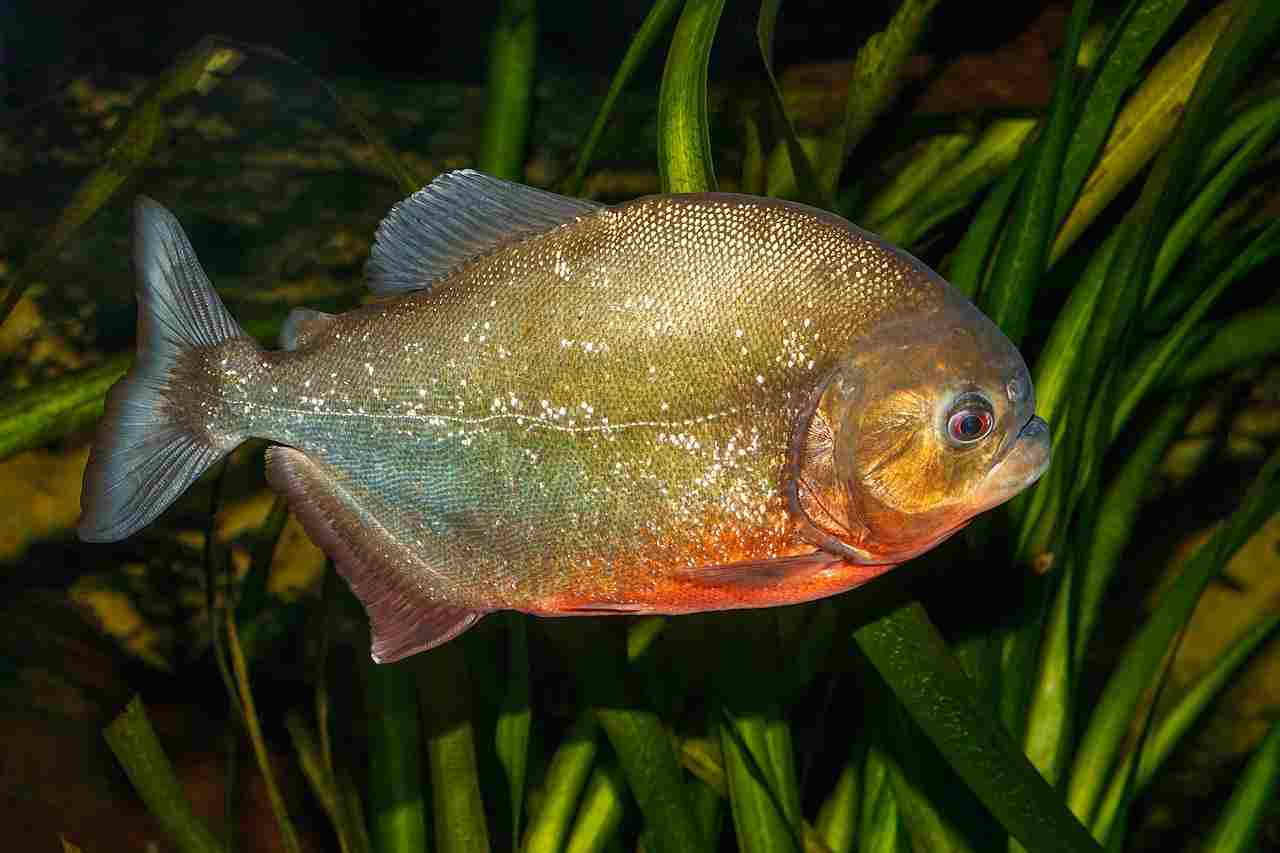
5. Bluefin Tuna
Bluefin Tuna is a fish that is well-known for its carnivorous nature. With its sleek and powerful body, the Bluefin Tuna is a formidable predator in the ocean. These fish have a voracious appetite and are known to consume large quantities of prey.
One of the key characteristics of the Bluefin Tuna’s feeding habits is its incredible speed and agility. These fish are capable of swimming at high speeds, allowing them to chase down their prey with ease. They are known to feed on a variety of marine animals, including smaller fish, squid, and crustaceans.
Bluefin Tuna have sharp teeth and powerful jaws, which they use to capture and devour their prey. They are skilled hunters and can quickly strike and swallow their prey whole. Their carnivorous diet provides them with the necessary nutrients and energy to sustain their active lifestyle.
Another interesting aspect of the Bluefin Tuna’s feeding behavior is their ability to migrate long distances in search of food. These fish are known to travel thousands of miles in search of areas with abundant prey. This migration allows them to find optimal feeding grounds and ensures their survival in different oceanic regions.
6. Great White Shark
The Great White Shark is a fish that is well-known for its carnivorous nature. With its powerful body and rows of sharp teeth, the Great White Shark is a formidable predator in the ocean. These apex predators have a reputation for being one of the most fearsome creatures in the sea.
One of the key characteristics of the Great White Shark’s feeding habits is its ability to detect and track its prey from a distance. These sharks have an acute sense of smell and can detect even the faintest scent of blood in the water. Once they have located their prey, they use their powerful jaws and teeth to deliver a swift and deadly bite.
The diet of the Great White Shark primarily consists of marine mammals, such as seals and sea lions. These animals provide a rich source of nutrients and energy for the sharks. The Great White Shark is known for its impressive hunting techniques, often launching surprise attacks from below to catch its prey off guard.
Another interesting aspect of the Great White Shark’s feeding behavior is its scavenging ability. These sharks are known to scavenge on carcasses of dead animals, including whales and dolphins. This scavenging behavior allows them to take advantage of available food sources and ensures their survival in times when hunting opportunities are scarce.
The Great White Shark’s carnivorous diet is essential for its survival and growth. These sharks have a high metabolic rate and require a substantial amount of food to sustain their large bodies. Their diet provides them with the necessary nutrients and energy to maintain their active lifestyle and survive in the harsh marine environment.
Are Fish Omnivores?
While not all fish are omnivores, there are several species that exhibit omnivorous feeding habits. Some examples of omnivorous fish include tilapia, catfish, angelfish, barramundi, perch, sunfish, and carp. These fish have adapted to consume a variety of food sources, including both plant and animal matter.
One of the reasons why some fish species have omnivorous diets is the inadequate supply of their preferred food sources. In certain environments, these fish may not have access to a sufficient amount of their preferred prey, such as smaller fish or invertebrates. As a result, they have evolved to be opportunistic feeders, consuming whatever food sources are available to them.
Omnivorous fish are known to exhibit a wide range of feeding behaviors. While some may primarily consume plant matter, others are more predatory in nature and may consume zooplankton, macroscopic crustaceans, mollusks, and even other fish. This versatility in their diet allows them to adapt to different environments and take advantage of various food sources.
In addition to actively hunting for prey, some omnivorous fish also exhibit scavenging and detritivorous behaviors. These fish are capable of consuming decaying organic matter, such as dead plants or animals. By doing so, they play an important role in the ecosystem by recycling nutrients and contributing to the overall health of their environment.
It is important to note that while some fish species are omnivorous, not all fish have the same dietary preferences. Fish have evolved to occupy different ecological niches, and their feeding habits reflect these adaptations. Some fish are specialized herbivores, consuming primarily plant matter, while others are strict carnivores, relying solely on animal prey for their nutrition.
Are Fish Herbivores?
While it is true that not all fish are herbivores, there are several species that primarily consume plant matter as part of their diet. These herbivorous fish have adapted to feed on various types of aquatic vegetation, algae, and other plant material found in their natural habitats. Let’s explore some examples of herbivorous fish and their feeding habits.
One example of a herbivorous fish is the parrotfish. These colorful fish are known for their beak-like mouths, which they use to scrape algae off rocks and coral. Parrotfish play a crucial role in maintaining the health of coral reefs by preventing the overgrowth of algae, which can smother the coral and hinder its growth.
Another herbivorous fish is the surgeonfish, also known as tangs. Surgeonfish have a unique adaptation called a “scalpel” or a sharp spine on their tail. They use this spine for defense, but they primarily feed on algae and seagrass. Surgeonfish are important for the health of coral reefs as well, as they help control the growth of algae and promote the growth of coral.
Damselfish are another example of herbivorous fish. They primarily feed on algae and small invertebrates found on rocks and coral. Damselfish are known for their territorial behavior and can be quite aggressive in defending their feeding areas.
Mbunas, which are a group of cichlid fish found in Lake Malawi, are also herbivorous. They feed on algae and other plant material found in the rocky habitats of the lake. Mbunas have specialized teeth that allow them to scrape algae off rocks, making them highly adapted to their herbivorous diet.
Plecos, or plecostomus, are herbivorous catfish that are often kept in aquariums. They have a sucker-like mouth that they use to scrape algae off surfaces. Plecos are known for their ability to keep aquariums clean by consuming algae and other organic matter.
Rabbitfish, as the name suggests, have a diet that consists mainly of algae. They are found in tropical and subtropical waters and play an important role in controlling algal growth on coral reefs and rocky substrates.
Lastly, the grass carp is a large herbivorous fish that feeds on aquatic plants, including grasses and weeds. Grass carp are often used in aquatic weed control programs to manage the growth of unwanted vegetation in lakes and ponds.
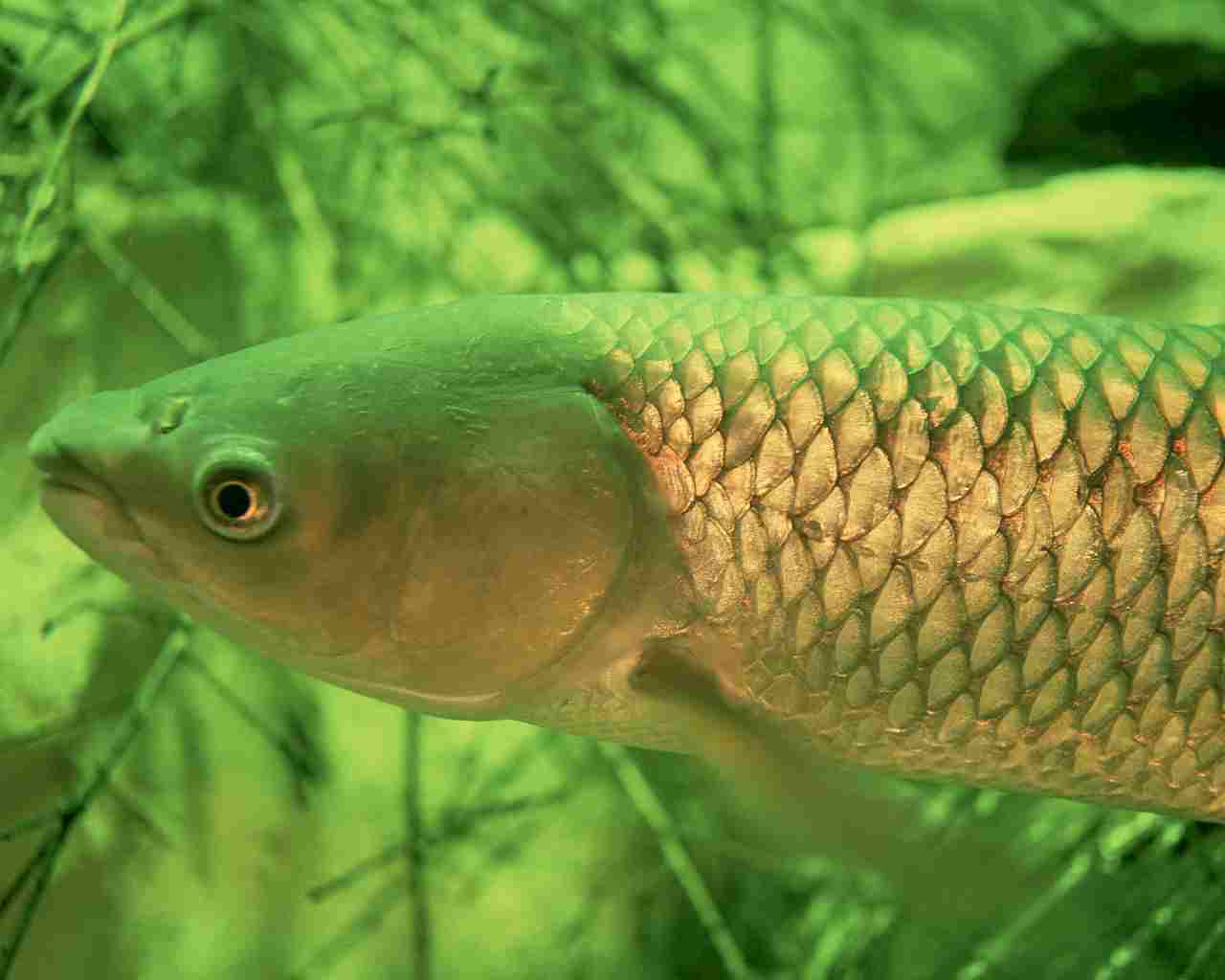
Are All Fish Carnivores?
Contrary to popular belief, not all fish are carnivores. While some fish, such as sharks, tunas, and piranhas, are indeed carnivorous, the feeding habits of fish vary greatly depending on their species and environmental factors. The ability of fish to consume meat is often influenced by their morphological and behavioral adaptations.
Fish have evolved different feeding strategies to survive in their respective habitats. Some fish have specialized teeth and jaws that allow them to capture and consume prey, while others have developed unique hunting techniques. These adaptations enable carnivorous fish to efficiently catch and consume other animals as their primary source of nutrition.
However, it is important to note that there are many fish species that have omnivorous or herbivorous diets. These fish consume a variety of plant matter, algae, and small invertebrates as part of their feeding habits. They have adapted to feed on different types of aquatic vegetation and utilize various feeding mechanisms to obtain their food.
The diversity in fish feeding habits highlights the complexity of the underwater ecosystem. It is crucial to understand the specific dietary requirements of different fish species to ensure their proper care and conservation. By studying the feeding habits of fish, scientists can gain valuable insights into the ecological roles and interactions of these fascinating creatures.
Are Fish Herbivores, Carnivores, or Omnivores?
Fish can have a variety of feeding habits, including being herbivores, carnivores, or omnivores. The specific feeding habits of fish depend on their species and the environmental stressors they face.
Earlier in this article, we discussed how not all fish are carnivores. While some fish, like sharks, tunas, and piranhas, primarily consume meat, there are many fish species that have omnivorous or herbivorous diets. These fish have adapted to consume a variety of plant matter, algae, and small invertebrates as part of their feeding habits.
Herbivorous fish are those that primarily consume plant matter. They have specialized adaptations that allow them to efficiently feed on different types of aquatic vegetation. These fish may have long, slender mouths or specialized teeth that are designed for grazing on plants. They play an important role in maintaining the balance of aquatic ecosystems by controlling the growth of aquatic plants.
On the other hand, carnivorous fish are those that primarily consume other animals. They have evolved various hunting techniques and adaptations to capture and consume their prey. Some carnivorous fish, like barracudas and pikes, have sharp teeth and powerful jaws that allow them to catch and devour their prey. Others, like the great white shark, have streamlined bodies and powerful swimming abilities that enable them to chase down and capture their prey.
Lastly, there are omnivorous fish that have a more varied diet, consuming both plant matter and small animals. These fish have adapted to utilize various feeding mechanisms to obtain their food. They may have a combination of teeth and jaws that allow them to consume both plant matter and small prey. This flexibility in their diet allows them to survive in a wide range of environments.
Understanding the feeding habits of fish is crucial for their proper care and conservation. By studying the dietary requirements of different fish species, scientists can ensure that they are provided with the appropriate nutrition in captivity. Additionally, understanding the ecological roles and interactions of herbivorous, carnivorous, and omnivorous fish helps us better comprehend the complex dynamics of aquatic ecosystems.
FAQs
1. Is Fish a Carnivore or Omnivore?
Fish can be carnivores or omnivores, depending on the species.
Many fish species are indeed carnivores, meaning they primarily feed on other animals. These carnivorous fish have sharp teeth and powerful jaws that allow them to catch and consume their prey. Examples of carnivorous fish include sharks, barracudas, and pike.
On the other hand, there are also fish species that are omnivores, which means they have a more varied diet that includes both plants and animals. These omnivorous fish have adapted to eat a combination of algae, plants, insects, and small aquatic animals. Tilapia and carp are examples of omnivorous fish.
So, to answer the question, fish can be both carnivores and omnivores. It all depends on the specific species and its dietary preferences.
2. Does Fish Count as Carnivore?
Fish can indeed count as carnivores, but not all fish fall into this category.
Carnivorous fish are those that primarily feed on other animals. They have specialized adaptations such as sharp teeth and powerful jaws that allow them to catch and consume their prey. Examples of carnivorous fish include sharks, barracudas, and pike. These fish rely on a diet rich in protein and fats obtained from consuming other aquatic organisms.
However, it’s worth noting that not all fish are carnivores. There are also herbivorous and omnivorous fish species. Herbivorous fish primarily feed on plants and algae, while omnivorous fish have a more varied diet that includes both plants and animals. Tilapia and carp are examples of omnivorous fish that consume a combination of algae, plants, insects, and small aquatic animals.
3. Are All Fish Meat Eaters?
No. Not all fish are meat eaters. While some fish species are carnivorous and primarily feed on other animals, there are also herbivorous and omnivorous fish that have different dietary preferences.
Carnivorous fish, such as sharks, barracudas, and pike, have specialized adaptations like sharp teeth and powerful jaws that allow them to catch and consume their prey. They rely on a diet rich in protein and fats obtained from consuming other aquatic organisms.
On the other hand, herbivorous fish primarily feed on plants and algae. They have specialized teeth and digestive systems that are adapted to process plant matter. Examples of herbivorous fish include certain species of tangs and surgeonfish.
Lastly, there are omnivorous fish that have a more varied diet, consuming both plants and animals. They may eat algae, plants, insects, and small aquatic animals. Tilapia and carp are examples of omnivorous fish that exhibit this dietary flexibility.
So, while some fish are indeed meat eaters, it’s important to recognize that not all fish fall into this category. The diverse dietary preferences of fish contribute to the overall balance and functioning of aquatic ecosystems.
4. Is Tilapia a Carnivore, Herbivore, or Omnivore?
Tilapia is an omnivore. This means that it has a flexible diet and can consume both plants and animals. Tilapia feed on a variety of food sources, including algae, aquatic plants, insects, and small aquatic animals. They have adapted digestive systems that allow them to efficiently process both plant matter and animal protein.
As an omnivorous fish, tilapia play an important role in maintaining the balance of aquatic ecosystems. They contribute to the nutrient cycling by consuming both producers (plants and algae) and consumers (small aquatic animals). This helps to regulate the population sizes of different organisms and ensures the overall health of the ecosystem.
In aquaculture, tilapia are often raised in ponds or tanks and are fed a balanced diet that includes both plant-based and animal-based ingredients. This allows them to grow and thrive while providing a sustainable source of protein for human consumption.
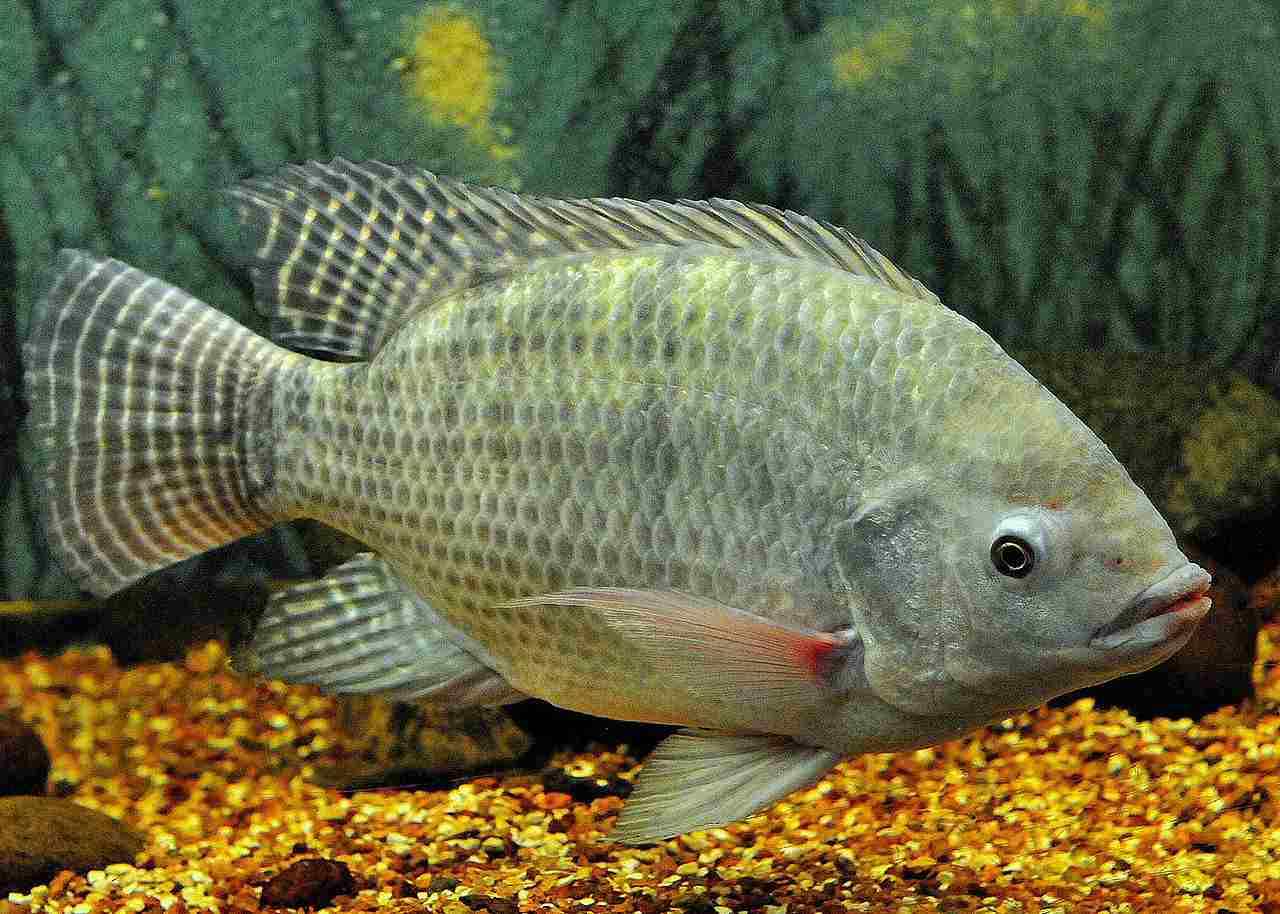
5. Are Fish Herbivores?
Fish can be herbivores, but not all fish fall into this category. Herbivorous fish primarily feed on plants, algae, and other vegetation found in their aquatic habitats. They have specialized digestive systems that allow them to extract nutrients from plant matter efficiently. Some examples of herbivorous fish include rabbitfish and grass carp.
However, it’s important to note that not all fish are herbivores. Fish have diverse dietary preferences, and their feeding habits can vary greatly depending on the species. Some fish are omnivorous, meaning they consume both plants and animals. Others are solely carnivorous and prey on smaller fish or plankton.
The classification of fish as herbivores, omnivores, or carnivores is based on their natural diet and feeding behavior. Understanding the dietary preferences of different fish species is crucial for maintaining the balance of aquatic ecosystems and ensuring the overall health of fish populations.
6. Are Small Fish Herbivores?
Small fish can have varied dietary preferences, including herbivorous, omnivorous, and carnivorous tendencies. For example, certain small fish species like rabbitfish are herbivores, feeding primarily on plants and algae. They have specialized digestive systems that allow them to efficiently extract nutrients from plant matter. Similarly, larger small fish like grass carp also fall into the herbivorous category, consuming vegetation found in their aquatic habitats.
On the other hand, some small fish are omnivorous, meaning they consume both plants and animals. These fish have a more diverse diet, including both plant matter and smaller organisms. However, there are also small fish that are solely carnivorous, preying on plankton as their main source of food.
7. What Do Fish Eat?
Fish have a diverse diet that varies depending on the species and their natural habitat. They eat a wide range of food sources, including plants, smaller organisms, and even other fish.
Many fish species are carnivorous, meaning they primarily feed on other animals. They have sharp teeth and strong jaws that allow them to catch and consume their prey. Some examples of carnivorous fish include sharks, barracudas, and pike. These fish are often at the top of the food chain in their ecosystems.
On the other hand, there are also herbivorous fish that primarily eat plants and algae. They have specialized digestive systems that help them extract nutrients from plant matter. Some herbivorous fish species include rabbitfish and grass carp.
Additionally, there are omnivorous fish that have a more varied diet, consuming both plants and animals. They have adapted to eat a combination of plant matter and smaller organisms. Examples of omnivorous fish include tilapia and catfish.
Overall, fish have a wide range of dietary preferences, with some being carnivores, herbivores, or omnivores. Their diet is influenced by their natural environment and the availability of food sources.
8. How Many Species of Carnivorous Fish are There?
There are numerous species of carnivorous fish found in various aquatic environments, so that it is difficult to place a definite number. From the well-known sharks to the agile barracudas and the voracious pike, carnivorous fish come in all shapes and sizes.
These fish have evolved specialized adaptations such as sharp teeth and strong jaws to catch and consume their prey. While it is difficult to provide an exact number, scientists estimate that there are thousands of species of carnivorous fish worldwide. Each species has its own unique hunting strategies and preferred prey, contributing to the incredible diversity within this group.
9. What is an Omnivorous Fish?
An omnivorous fish is one that consumes both plant and animal matter in various forms. These fish have a diverse diet that includes phytoplankton, crustaceans, other fish, mollusks, seaweed, and seagrasses. Unlike strict carnivores or herbivores, omnivorous fish have adapted to consume a wide range of food sources.
The ability to consume both plant and animal matter provides omnivorous fish with flexibility in their feeding habits. They can take advantage of available food sources in their environment, whether it be small prey or plant material. This adaptability allows them to survive in different ecosystems and habitats.
Some examples of omnivorous fish include tilapia, carp, and catfish. These fish have specialized mouth structures and teeth that enable them to efficiently consume both plant and animal matter. They may use their teeth to scrape algae off rocks or capture small prey.
Omnivorous fish play an important role in aquatic ecosystems as they help maintain the balance between herbivores and carnivores.
10. Are Fish Carnivores Yes or No?
Yes. Fish can be classified as carnivores, but not all fish fall into this category. The answer to whether fish are carnivores or not depends on the specific species. Some fish are indeed carnivorous, meaning they primarily consume other animals as their main source of food. However, there are also fish that have an omnivorous diet, meaning they consume both plant and animal matter.
The question “Are fish carnivores?” can be answered with a “yes” and a “no.” It is important to note that not all fish are strict carnivores. Some fish have adapted to consume a variety of food sources, including both plant and animal matter. This allows them to survive in different environments and take advantage of available food sources.
11. What is the Name of Omnivorous Fish?
Names of omnivorous fish include carp and catfish, which are known for their ability to consume both plant and animal matter. These fish are often referred to as opportunistic feeders, as they take advantage of a wide range of food sources.
Carp, a common omnivorous fish, have a diverse diet that includes aquatic plants, insects, crustaceans, and even small fish. They are able to adapt to different environments and feed on whatever is available. Catfish, another example of an omnivorous fish, have a similar feeding behavior. They consume a variety of food items, including algae, aquatic plants, insects, and small fish.
The name “omnivorous” accurately describes the feeding behavior of these fish, as they have the ability to consume both plant and animal matter.
12. Are Any Fish Herbivores?
Yes, there are fish that are herbivores, including rabbitfish and mbunas. These fish primarily consume phytoplankton, which are microscopic algae that float in the water, as well as macroalgae and aquatic plants. Herbivorous fish have adapted to feed on these autotrophs as their main source of nutrition.
Phytoplankton are rich in nutrients and provide herbivorous fish with the energy they need to survive. These fish have specialized mouthparts and digestive systems that allow them to efficiently extract nutrients from such food sources.
13. Are there Omnivorous Fish?
Are there fish that can eat both plants and animals? The answer is yes. Some fish are classified as omnivores, meaning they have a diet that includes both plant matter and other organisms.
Omnivorous fish have a versatile feeding behavior that allows them to consume a wide range of food sources. They can eat algae, aquatic plants, insects, small crustaceans, and even smaller fish. This adaptability in their diet enables them to survive in various aquatic environments.
One example of an omnivorous fish is the tilapia. Tilapia are known to consume both plant material, such as algae and aquatic plants, as well as small invertebrates and insects. They have specialized teeth and jaws that allow them to efficiently feed on a variety of food sources.
Another example of an omnivorous fish is the gourami. Gouramis have a diverse diet that includes plant matter, insects, crustaceans, and even small fish. They have a unique labyrinth organ that enables them to breathe air, allowing them to inhabit oxygen-depleted waters where other fish may struggle to survive.
14. What are Examples of Carnivorous Fish?
Carnivorous fish are those that primarily feed on other animals. They have specialized adaptations such as sharp teeth and strong jaws to help them catch and consume their prey. Here are two examples of carnivorous fish:
1. Pike
The pike is a predatory fish known for its aggressive hunting behavior. It has a long, slender body and a mouth full of sharp teeth. Pike primarily feed on smaller fish, but they are also known to eat frogs, insects, and even small mammals. They are ambush predators, lurking in the water and striking their prey with lightning-fast speed.
2. Barracuda
Barracudas are large, predatory fish found in tropical and subtropical waters. They have a sleek, elongated body and a mouth filled with razor-sharp teeth. Barracudas are known for their incredible speed and agility, allowing them to chase down and capture their prey. They primarily feed on smaller fish, but they have been known to eat crustaceans and squid as well.
15. What are 5 Examples of Herbivorous Fish?
Herbivorous fish are those that primarily feed on plant matter. They have specialized adaptations such as flat teeth and long intestines to help them digest plant material. Here are five examples of herbivorous fish:
1. Silver Dollar Fish
The Silver Dollar Fish is a popular herbivorous fish in the aquarium hobby. They have a round, disc-shaped body and are known for their silver coloration. Silver Dollar Fish primarily feed on algae and plant matter, making them a great addition to a planted tank.
2. Bristlenose Pleco
The Bristlenose Pleco is a small herbivorous fish that is commonly kept in aquariums. They have a unique appearance with bristle-like appendages on their head. Bristlenose Plecos feed on algae and plant matter, helping to keep the tank clean and free from excessive algae growth.
3. Siamese Algae Eater
The Siamese Algae Eater is a popular choice for controlling algae in aquariums. They have a slender body and are known for their black horizontal stripes. Siamese Algae Eaters primarily feed on algae, making them an effective natural solution for keeping algae under control.
4. Rabbitfish
Rabbitfish are herbivorous fish commonly found in coral reefs. They have a compressed body and are known for their rabbit-like face. Rabbitfish feed on algae and seagrass, playing an important role in maintaining the health of coral reef ecosystems.
5. Pacu
Pacu are large herbivorous fish native to South America. They have a powerful jaw and sharp teeth that are adapted for crushing and grinding plant matter. Pacu primarily feed on fruits, nuts, and seeds that fall into the water, making them an important disperser of plant seeds in their native habitats.
16. Which is the Biggest Carnivorous Fish?
The biggest carnivorous fish is the Great White Shark. This aquatic organism is believed to be the largest predatory fish in the world. With its powerful body and sharp teeth, the Great White Shark is a formidable hunter in the ocean.
It can grow up to 20 feet in length and weigh over 5,000 pounds. Known for its iconic appearance and fearsome reputation, the Great White Shark primarily feeds on marine mammals such as seals and sea lions. Its diet also includes other fish species, seabirds, and even smaller sharks. With its incredible size and hunting prowess, the Great White Shark holds the title of the largest carnivorous fish in the ocean.
Conclusion
* The sections of this article have covered a wide range of topics related to fish and their eating habits.
* We started by addressing the question of whether fish are carnivores or omnivores, exploring the different types of fish diets and their classification.
* We then delved into specific examples, such as the carnivorous nature of tilapia and the herbivorous tendencies of some fish species.
* We also discussed the feeding habits of small fish and the variety of foods that fish consume in their natural habitats.
* Additionally, we explored the concept of omnivorous fish and provided examples of both carnivorous and herbivorous fish species.
* We even highlighted the largest carnivorous fish, the Great White Shark, and its impressive hunting abilities.
* Throughout the article, we aimed to provide a comprehensive overview of the various dietary preferences and behaviors exhibited by fish.
* By doing so, we hope to have answered the question of whether fish are carnivores, herbivores, or omnivores.
* Fish can exhibit a range of dietary preferences, with some being strictly carnivorous, others herbivorous, and many falling somewhere in between as omnivores.
* Understanding the eating habits of fish is crucial for their conservation and for maintaining the delicate balance of aquatic ecosystems.
* Whether they feast on other fish, plants, or a combination of both, fish play an important role in the food chain and contribute to the overall health of our oceans and freshwater environments.
